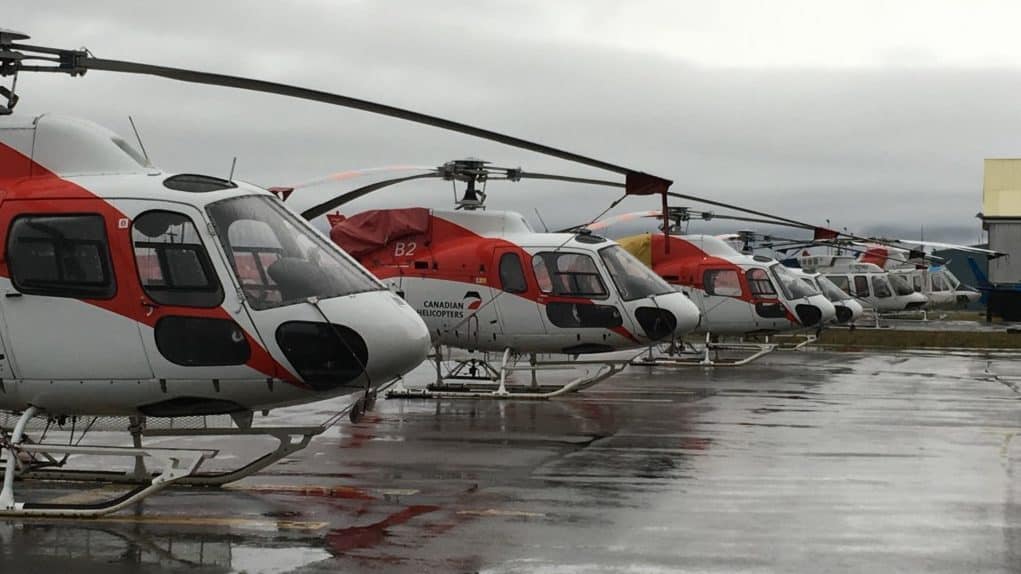
There’s a lot more to the question, ‘Can Helicopters Fly in the Rain?’, than meets the eye. While your initial thought may be, of course, they can, and that is the correct answer, there is a lot more to it than you may think!
Rain reducing visibility is the biggest issue helicopter pilots face. Most helicopter pilots rely on being able to see where they’re going at all times, and most helicopters are basic in nature, lacking the sophisticated avionics that allow them to safely fly without sight of the ground.
Because of this, helicopters usually fly lower to the ground than fixed-wing aircraft. Pilots need to be aware of, see, and avoid tall structures like buildings, transmission/communication towers, and electrical wires at all times.
During flights in rain, helicopter pilots may also have to deal with lower cloud ceilings. Not only does the rain reduce how much a pilot can see, but the clouds may force the pilot to fly lower, increasing the risk of flying into terrain or obstacles. Uneven cloud ceilings and pockets of clouds in suspension can really cause problems for pilots, especially when flying in mountain valleys.
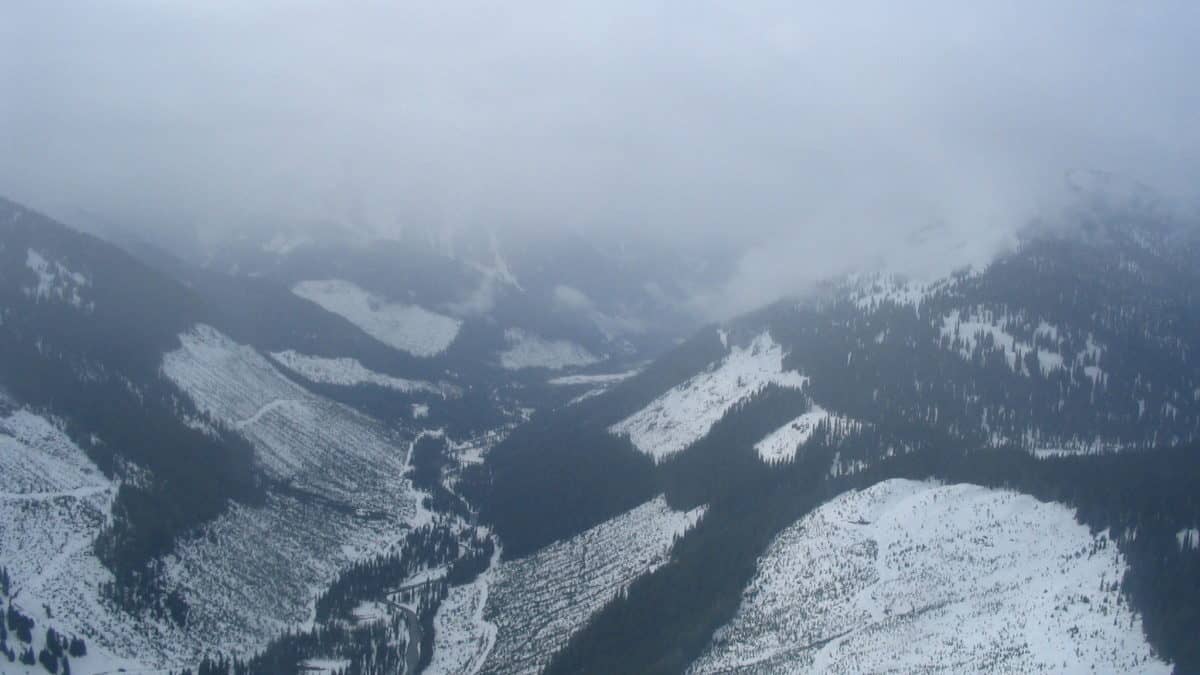
This is the cause of most CFIT (Controlled Flight Into Terrain) accidents of which nearly all are fatal for the aircraft’s occupants.
When it comes to larger, more complex helicopters, many are equipped with advanced avionics and auto-pilot systems for flying safely in the clouds.
During training, pilots are taught to avoid flying in clouds when temperatures are close to freezing, as inflight icing may occur, which is problematic for the main rotor blades, tail rotor, and windshield visibility.
Let’s take a closer look at the various types of inclement weather that helicopters contend with on a regular basis.
How Does Rain Affect a Helicopter?
Rain mainly affects a helicopter by reducing the visibility of the pilot. Most helicopters do not have windshield wipers. High cruise speeds allow the rain to bead off the windshield in flight, but when on approach at slower speeds, rain droplets on the windshield can severely obscure the pilot’s view.
Generally, rain doesn’t pose any operational restrictions on the helicopter itself, but it can cause problems during takeoff and landing when pilots need to be able to see the most.
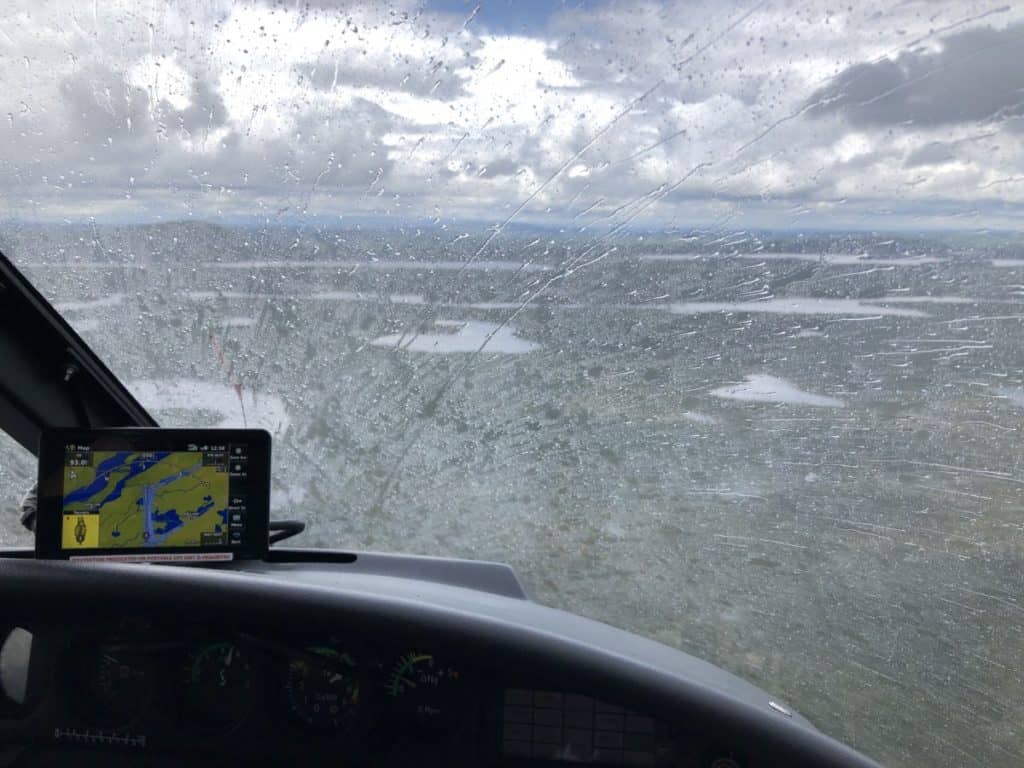
For helicopters that have the luxury to fly in poor weather and the aircraft is being flown by the auto-flight systems, the pilots are able to utilize benefits like instrument approach procedures and runway lighting systems that airplanes use to help guide the helicopter in safely.
Busy heliports can also employ these procedures and lighting systems to help guide helicopters in during heavy rain and poor visibility conditions.
One type of weather that pilots strive to avoid is thunderstorms and the extreme conditions that can be associated with them. Torrential rains, hail, downspouts, tornados, straight-line winds, and lightning are not only dangerous to the pilot’s visibility but can also lead to structural damage to the aircraft.
Staying on the ground, turning around, or diverting until a severe storm has passed is a general rule of thumb for all experienced pilots. Trust me, I did not heed this advice as a junior pilot and it scared the living daylight out of me! Luckily, I was flying to pick up a passenger. When I landed, I advised that we would wait out the storm before taking off again!
The next thing that rain can do to affect a helicopter is when the temperature drops.
Learn More…
Try These Articles:
* How Do Airplanes Not Freeze In Flight?
* Can Helicopters Fly In Snow & Ice? This May Surprise You!
How Does Freezing Rain Affect a Helicopter?
Rain can remain in liquid form well below freezing, and is known as ‘supercooled’. When these water droplets impact an aircraft, they instantly freeze. Prolonged flight in these conditions can allow ice to form, thus deforming the shape of wings and rotors. This reduces the helicopter’s lift-creating ability and increases drag.
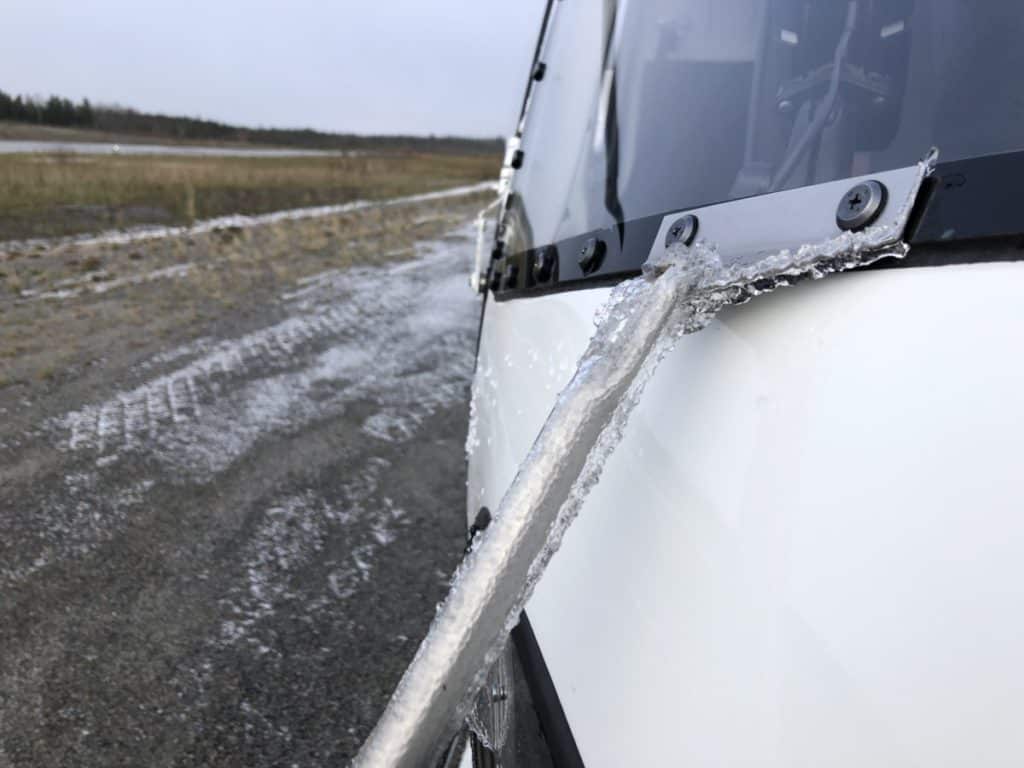
The added weight of ice on aircraft surfaces can impede lift and speed, making it difficult, if not impossible, for takeoff or continued flight to be possible.
Flying and ice don’t go well together. As the temperature begins to drop, helicopter pilots have to really be mindful of where they are about to fly, and what they need to do if they encounter freezing rain conditions.
If you’ve ever flown commercially on an airplane during the winter months in the northern half of the U.S. or most anywhere in Canada, you’ve probably at some time had your aircraft deiced prior to departure on wintry days.
Aircraft deicing involves spraying a glycol-based substance on the fuselage, wings, and horizontal stabilizers. It is sprayed on hot, normally at 140-150°F. This deicing removes any build-up of frost and ice, giving the aircraft time to get airborne above the poor weather before the moisture freezes up again. During the climb, any moisture remaining on the aircraft is blown off.
Helicopters, however, do not have the luxury of flying high above the weather and they are almost all prohibited from using any deicing solutions, as it has led to delamination of the main rotor blades via chemical corrosion, over time.

Join My Newsletter & Get Great Tips, Information and Experiences To Help You Become a Superb Pilot!
Just like fixed-wing aircraft, icing can lead to extremely dangerous operations for helicopters. It is essential that existing ice be removed before flight, and that steps also be taken to prevent the buildup of ice during flight.
It isn’t just the helicopter blades and windshield that have to be kept clear of ice. The engine air intakes and instrumentation sensors also must be ice-free for a flight to operate safely. A buildup of ice on an engine intake that then breaks off and gets sucked into the engine can, and has led to engine flameouts with catastrophic results.
Unlike fixed-wing aircraft, helicopter deicing and anti-icing systems are electrical and complex in nature, for those helicopters that have such capabilities aboard. Only the largest, most powerful helicopters have full anti-icing capabilities. Even then, they are limited to how much ice they can accumulate before the pilots must turn around.
The buildup of ice on helicopter rotors during flight makes a physical change to the shape of the rotor blades. Even a small ice buildup will increase drag, requiring more power from the engine/s to turn the rotor blades through the air to maintain flight RPM. At some point, the engine reaches its maximum power that it can deliver and the rotor RPM starts to decay – Not good!
Learn More…
Try These Articles:
* What is a Helicopter Instrument Rating?
* Can Helicopters Fly at Night? A Pilot Tells All!
How Do Pilots Avoid Freezing Conditions?
Pilots use aviation weather reports to see where freezing rain conditions may exist or have been reported. They use this crucial information to adjust their planned route. If encountered during flight, pilots will divert around the rain, or if able, fly at a lower altitude where temperatures are above freezing.
The best way to deal with freezing rain and icing conditions is to try to avoid them altogether. Prior to flight, and now inflight, pilots have access to detailed aviation weather reports that often pinpoint areas of known precipitation, which are frequently scattered in nature.
Pilots can also access PIREPs, which are actual pilot reports of recent weather conditions encountered by pilots, both inflight and while on the ground. These are by far the most accurate way of finding locations of freezing rain!
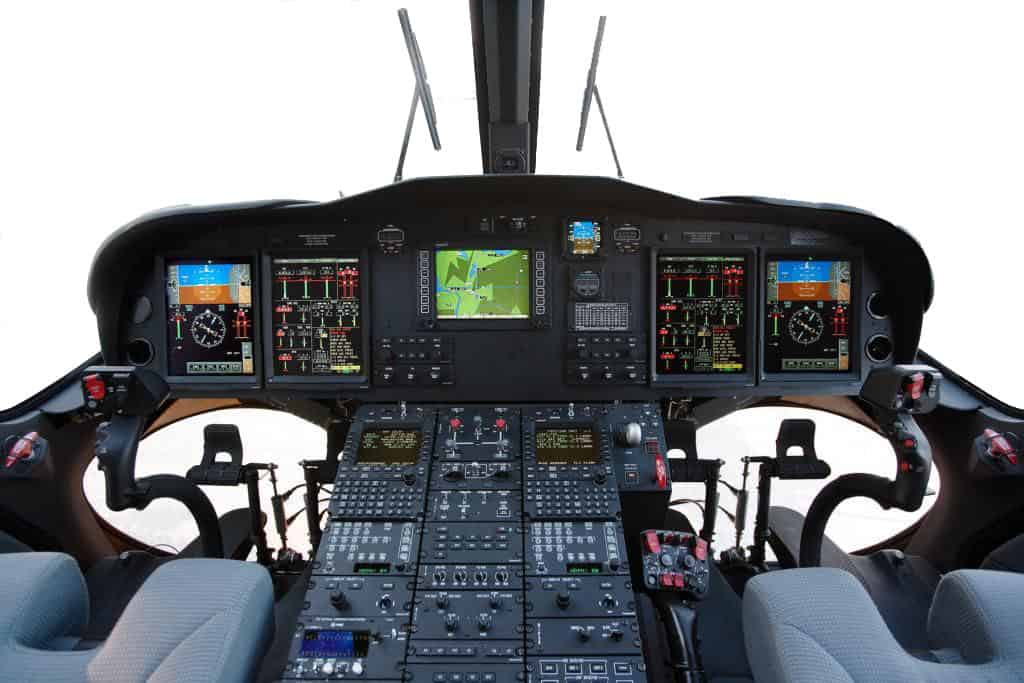
For example, an IFR-rated pilot with an IFR-equipped helicopter may very well choose not to enter a cloud deck, knowing that freezing temperatures will be encountered by doing so. This is a clear advantage that helicopters have over planes, where they can often fly at a lower altitude or via a different flight route, in order to avoid potentially dangerous conditions.
The last option available to all helicopter pilots when encountering heavy rain or freezing rain is to find an open spot, land, and wait for it to pass. If the pilot is smart, they will have the helicopter’s winter covers on board that will allow the main and tail rotor blades to quickly get covered once on the ground!

